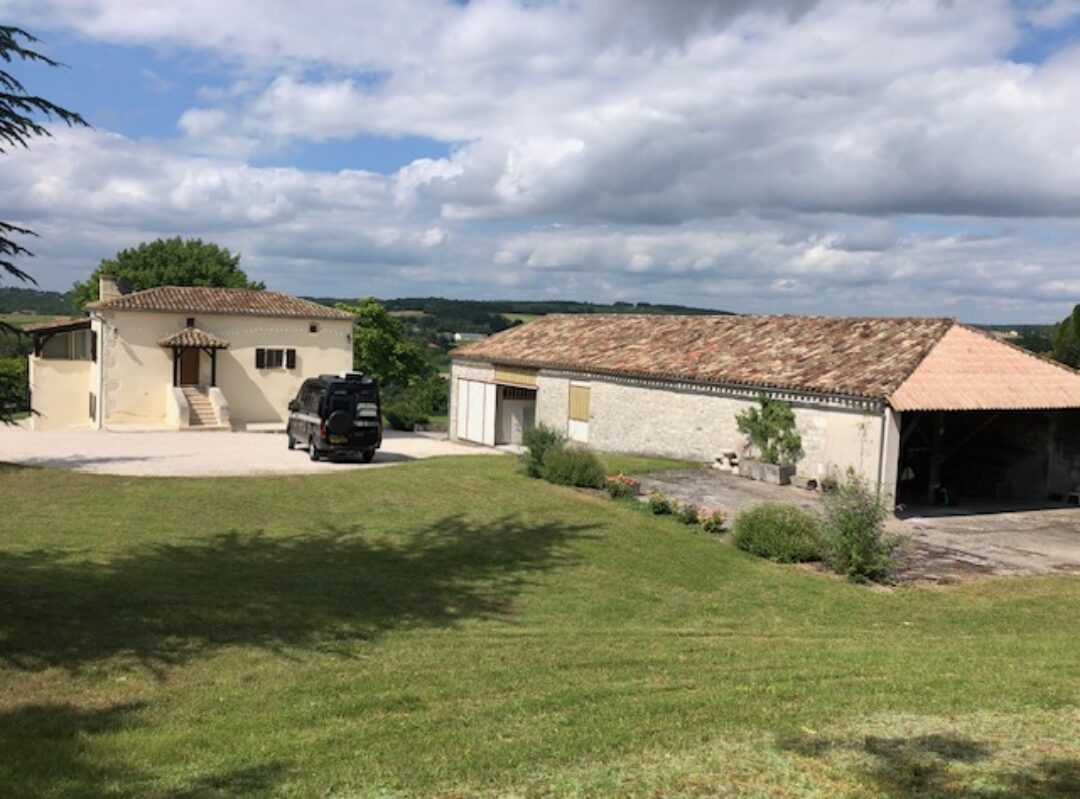We spent some time last year at some of the WWII locations in Normandy , and Joe has done numerous trips previously based on his interest in military vehicles and motorbikes, but there are new places to discover and places that Joe is happy to return to.
As we headed south in the Cotentin peninsula we stopped at Sainte Mère Église, a key zone for aerial landings on D-Day because of its strategic importance as a key route to Cherbourg. In the confusion of 13,000 American paratroopers being landed in the surrounding countryside, one company was dropped into the village square with one of the paratroopers, John Steele, becoming caught on the steeple of the church and left dangling until the Germans cut him down. The town now very much trades on its WWII history with a life size dummy parachutist hanging from the church, lots of military surplus shops and every other shop or restaurant having a WWII theme, but it is also an important location for commemorative events which even two former US presidents have attended. The town also houses the excellent Airborne Museum, although Joe, who had visited some years ago, was disappointed to find that, in his opinion, it had become more of a theme park with iPads handed out to scan information at various displays and more immersive experiences. It shows that museums need to adapt for new audiences but won’t necessarily appeal to everyone.

In contrast at our next stop in the Calvados region we came across a little treasure of a museum in the village of Saint Martin de Besaces. Many of the villages in this area have the suffix ‘Bocage’, a reminder of the particular topography of fields bordered by high banks and hedges inthe Normandy region that had such an important impact during the war, hindering the advance of the tanks and troops of the allied armies. We would have likely overlooked the small Musée de la Percée du Bocage but decided to stop as we cycled past. The very young volunteer on duty that day, Billy, was keen to share his interest and knowledge, in English, his own interest stemming from tales of the war from his grandmother. After chatting with Joe about his military vehicle interests, we discovered that Billy also knew a friend of Joe’s form the military vehicle scene who has relocated to France – what a small world. The museum had an excellent English commentary and explained how the allied troops took the surrounding area in July/August 1944 including villages we had visited only the day before on a motorbike tour. No wizzy technology needed here.

As we moved on within the region we made a stop at Pegasus Bridge, just between Caen and Ouistreahm and another strategic location taken by the Allies on D-Day, this time as a result of an aerial invasion by Horsa gliders led by Major John Howard. This landing is considered to be one of the greatest aviation feats of the war as three gliders landed (or crash-landed) within yards of the bridge enabling troops to take the bridge. A memorial museum is located close to the bridge and the original bridge is located within the museum grounds, having been replaced by a newer and slightly wider bridge, still in the original design. Originally known as the Bénouville Bridge, it was renamed Pegasus Bridge after the insignia of the I Airborne Corps. Another very interesting museum, striking a good balance with its exhibits and information provided.



On the opposite bank of the river sits the iconic Café Gondrée, supposedly the first house to have been liberated in France. The property was owned at the time by the parents of the current owner, the well-known ‘Madame Arlette’, a typically petite and elegant, but apparently redoubtable, French woman now in her 80s. We stopped for a glass of cider and Mme Arlette was still serving behind the bar. She is often happy to pose for photos with customers but not always so obliging. About 20 years ago Joe was on a family in the area using a reference book – After the Battle – which included wartime and contemporary photos of battle sites. On the cover was a photo of the infamous German tank ace, Michael Wittman. Joe stopped at Café Gondrée and asked Mme Arlette if she would care to sign the book for him. She sent Joe off with a flea in his ear, declining to sign, and saying ‘Not with that filthy German on the cover!’

